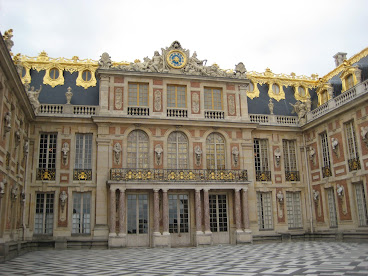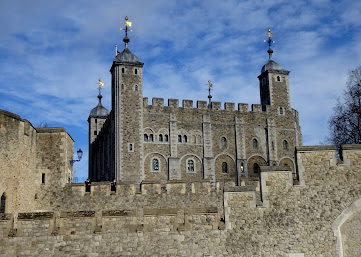10 Historical Places In Europe
Europe, a continent steeped in history, boasts a treasure trove of historical sites that tell the story of centuries past. From ancient civilizations to great empires, Europe has witnessed and preserved a rich tapestry of human history. Europe's historical places offer a captivating journey through time, allowing us to uncover the intricate tapestry of human civilization. From the architectural marvels of ancient Greece and Rome to the enigmatic allure of Stonehenge and the rich cultural heritage of the Alhambra, these sites tell stories of power, artistry, and spirituality. The historical places of Europe not only preserve the past but also serve as a source of inspiration and contemplation, inviting us to connect with our shared human history.
The Acropolis of Athens, Greece
Our journey begins in Athens, Greece, where the Acropolis stands as a symbol of the birthplace of democracy and Western civilization. The Acropolis is a rocky hill crowned with a collection of awe-inspiring ancient buildings, including the Parthenon, the Erechtheion, and the Temple of Athena Nike. These structures were constructed in the 5th century BCE, dedicated to the goddess Athena, and have become iconic examples of Classical Greek architecture. The Acropolis is not just a testament to architectural brilliance but also a reminder of the profound influence of ancient Greece on modern Western thought, politics, and culture.
The Colosseum, Rome, Italy
Our next stop takes us to Rome, Italy, where the Colosseum stands as a magnificent testament to the grandeur of the Roman Empire. Also known as the Flavian Amphitheatre, this iconic structure was built in 70-80 CE and could hold up to 80,000 spectators. Colosseum Rome was primarily used for gladiatorial contests and public spectacles, symbolizing the power and entertainment that defined the Roman world. The Colosseum has survived earthquakes, fires, and centuries of looting, making it one of the world's most enduring symbols of ancient Rome's architectural and engineering prowess.
Stonehenge, Wiltshire, England
In the heart of the English countryside lies Stonehenge, one of the most mysterious and enigmatic historical sites in Europe. Believed to be constructed between 3000 and 2000 BCE, this prehistoric monument consists of massive standing stones arranged in a circular pattern. The purpose and methods of construction of Stonehenge remain subjects of debate and speculation, contributing to its enduring allure. It is often associated with ancient astronomical and religious practices, and its existence invites contemplation about the beliefs and abilities of our distant ancestors.
The Alhambra, Granada, Spain
Traveling to the Iberian Peninsula, we arrive at the Alhambra, a palace and fortress complex in Granada, Spain. Built during the mid-13th century, this masterpiece of Islamic architecture represents the height of the Nasrid dynasty's rule in Al-Andalus. The Alhambra's intricate stucco work, stunning courtyards, and lush gardens offer a glimpse into the splendor of Moorish Spain. Its poetic beauty and cultural significance make it a jewel of Islamic art in Europe, showcasing the blending of Moorish, Christian, and Jewish influences.
The Palace of Versailles, France
Our journey takes us to France, where the Palace of Versailles stands as a symbol of the opulence of the French monarchy. Constructed during the 17th century, this magnificent palace was the royal residence of Louis XIV, the Sun King. Versailles boasts lavish halls, stunning gardens, and the Hall of Mirrors, where the Treaty of Versailles was signed in 1919, ending World War I. This palace, often synonymous with the grandeur and excesses of the French monarchy, played a pivotal role in shaping European history and culture.
The Acropolis of Rhodes, Greece
Returning to Greece, we visit the Acropolis of Rhodes, an ancient citadel located on the island of Rhodes. This archaeological site bears witness to the rich history of the Aegean world, with structures dating back to the Hellenistic and Roman periods. The Acropolis of Rhodes offers a unique blend of history and natural beauty, perched on a hill overlooking the Aegean Sea. Visitors can explore the remnants of temples, stadiums, and theaters that once thrived on this idyllic island, providing a glimpse into the lives of the people who lived there in antiquity.
The Charles Bridge, Prague, Czech Republic
The Charles Bridge in Prague, Czech Republic, is a splendid example of European Gothic architecture and one of the most iconic bridges in the world. Built in the 14th century, the bridge connects the Old Town with the Prague Castle across the Vltava River. Adorned with statues of saints and religious figures, the Charles Bridge is not just a remarkable feat of engineering but also a testament to the deep religiosity and cultural heritage of the Czech people. Its cobblestone pathways, guarded by the statues, invite visitors to step back in time and experience the rich history of this enchanting city.
The Pantheon, Rome, Italy
Our second visit to Rome takes us to the Pantheon, a marvel of ancient Roman engineering. Built in 126 CE, the Pantheon is a perfectly preserved Roman temple dedicated to all the gods. Its most notable feature is the oculus, a circular opening in the center of the dome that allows natural light to illuminate the interior. The Pantheon's architectural genius and enduring beauty are a testament to the Roman Empire's technical and artistic achievements. It has been a source of inspiration for architects and artists throughout history.
The Kremlin, Moscow, Russia
Moving to Eastern Europe, we arrive in Moscow, where the Kremlin stands as an enduring symbol of Russian power and history. The Kremlin, meaning "fortress" in Russian, is a complex of historic buildings, cathedrals, and palaces that have served as the center of Russian political and religious life for centuries. It includes iconic structures such as the Moscow Kremlin Wall, the Cathedral of the Annunciation, and the Tsar Bell. This UNESCO World Heritage Site offers a window into Russia's imperial and Soviet past and continues to be the heart of modern Russian politics.
The Tower of London, England
Our final destination is the Tower of London, a historic castle situated on the north bank of the River Thames. Founded towards the end of 1066 as part of the Norman Conquest of England, the Tower of London has served various purposes throughout its long history, including as a royal residence, a prison, and a treasury. It is most famous for housing the Crown Jewels of England, making it a symbol of royal authority and the British monarchy. The Tower's history is replete with tales of intrigue, imprisonment, and regal ceremonies, adding depth to its historical significance.





Comments
Post a Comment